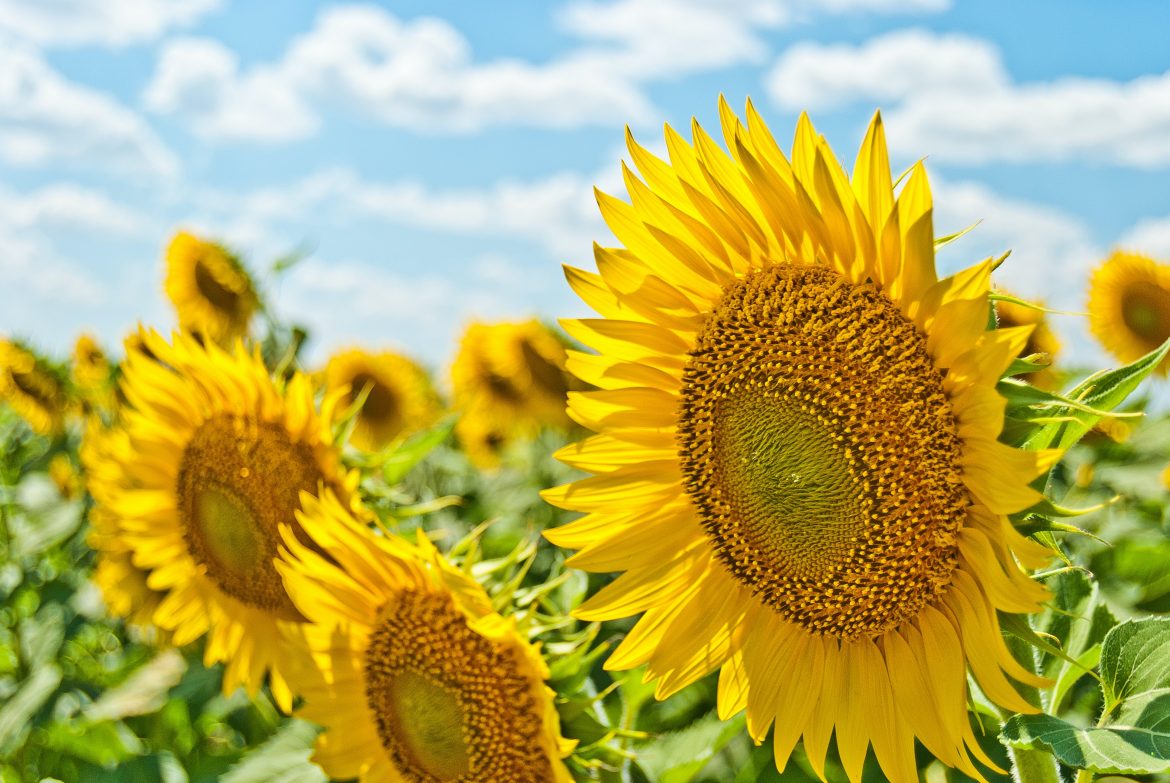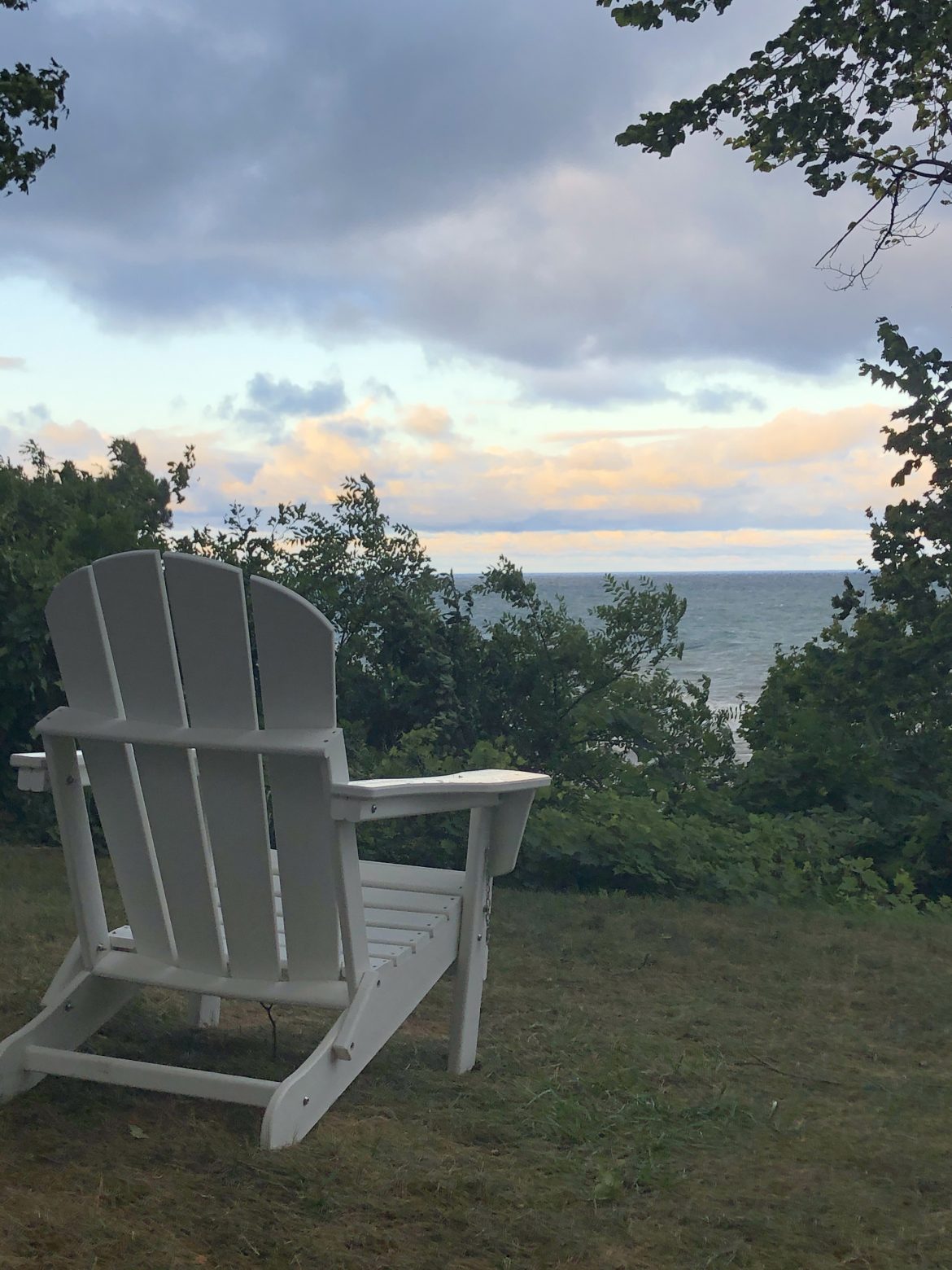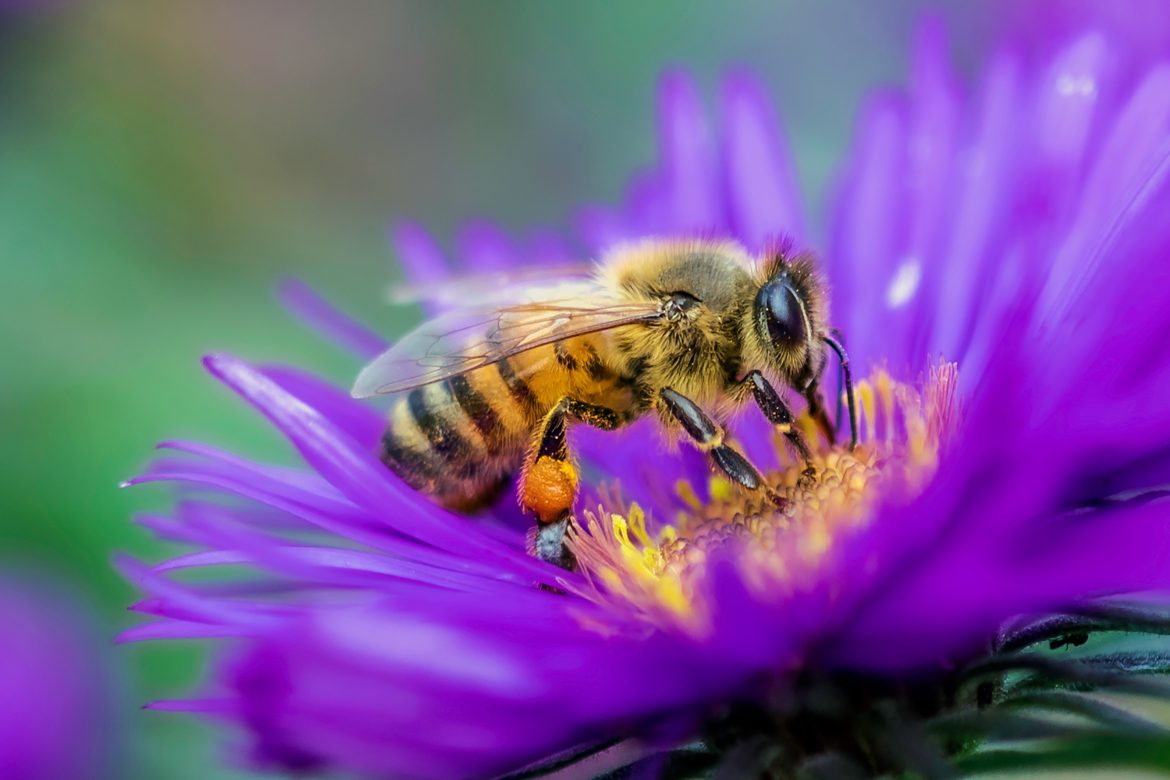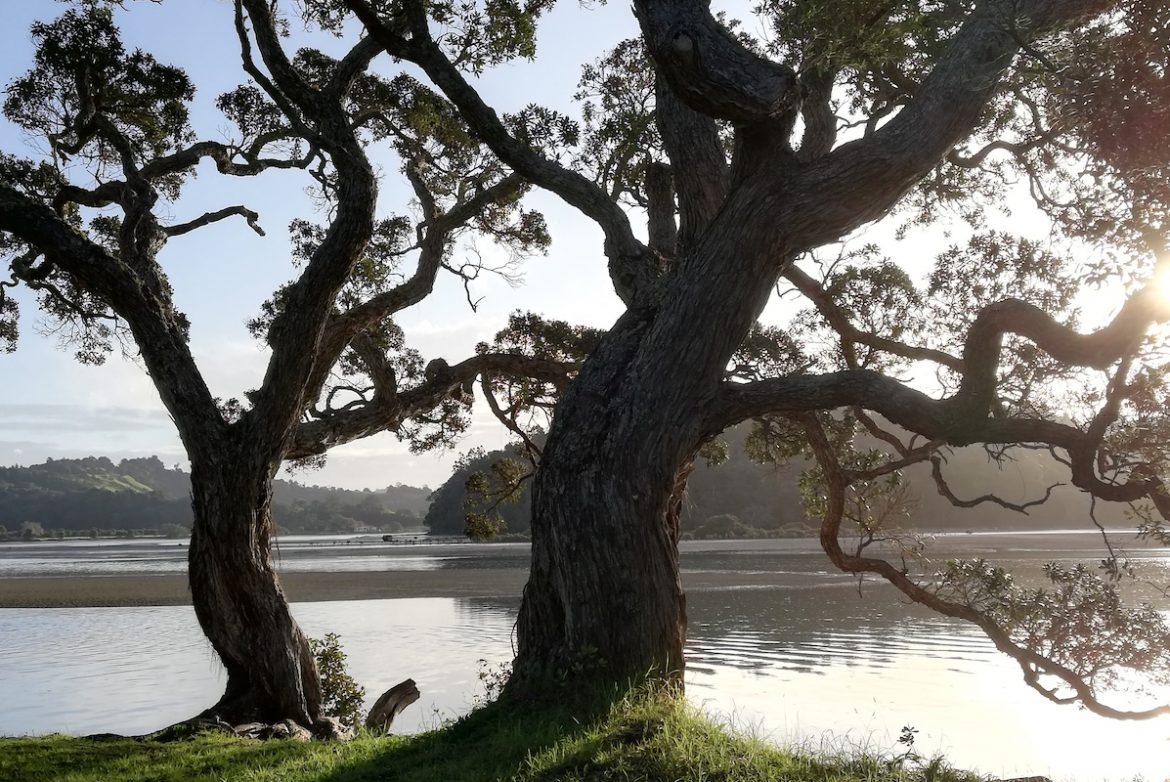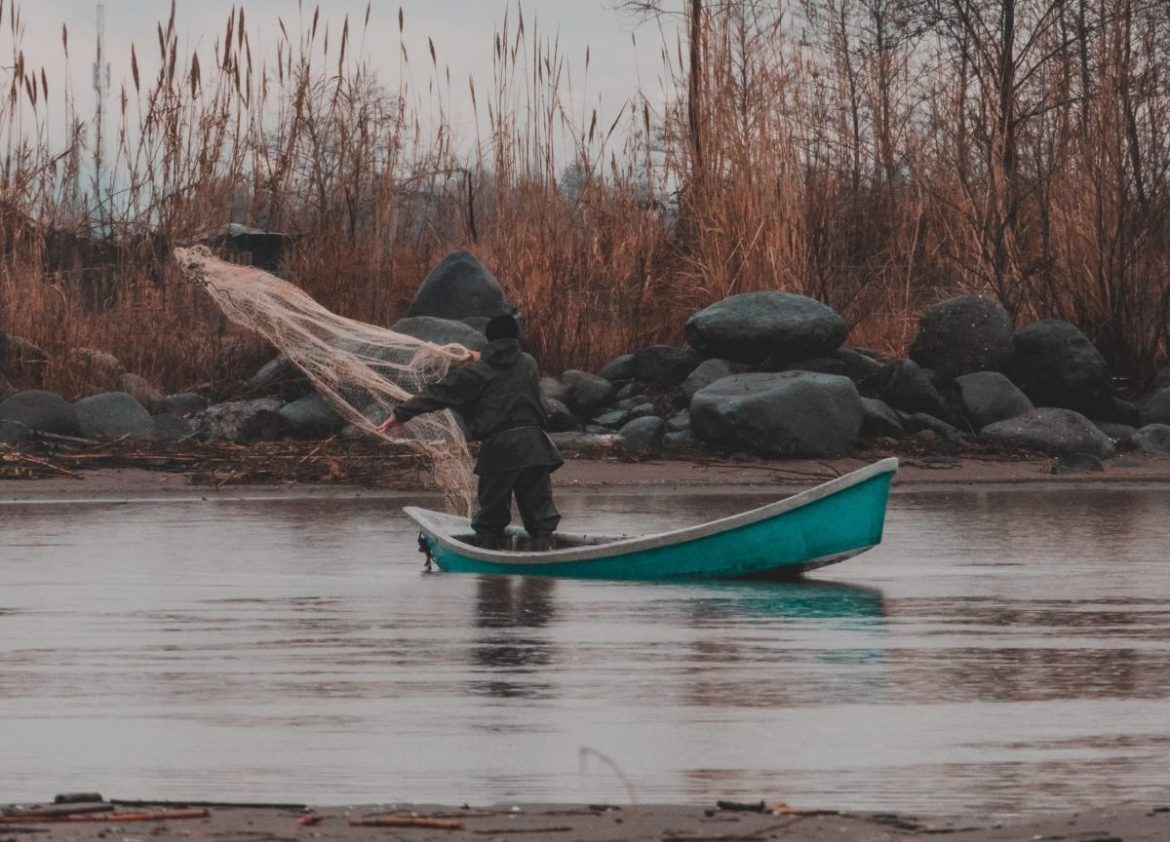by Christine Sine
Churching is changing, the world is changing, and we are changing and it seems that everywhere we turn we are being reminded of these changes. In the Northern Hemisphere, as we rush towards the summer, many of us are conflicted about returning to the church building or enjoying a season of travel, hospitality, and fun while continuing to join our church communities on Zoom.
Yet, God’s eyes guide me in the midst of all these activities as I talked about in my Meditation Monday last week. All we need is a little help in connecting all the wonderful, joy-filled moments of the season to our faith. We need to slow down, observe and take notice.
In the midst of all change, we need points of stability and security. This is something I realized years ago during my often destabilizing experiences on the Mercy Ship M/V Anastasis. Working in villages where children were dying of malnutrition, screening patients with deforming cleft lip and palate abnormalities, and working with refugees were often overwhelming. On top of that, my life was filled with travel, and in the midst I realized the need for what I called “at home” items. It was then that I created my first portable sacred space, a travel kit of sacred objects I could take with me no matter where I was. I have continued to created sacred spaces for my life ever since.
At our retreat Making Time for A Sacred Summer, Lilly Lewin and I will help all of us create sacred spaces that can form points of stability for the season ahead. Portable sacred spaces for our travel and sacred centerpieces for our desks, dining room tables, or even our gardens. Whether you are heading into summer or winter, these are incredibly important for our lives. I hope you will join us for this time of refreshment and renewal and find points of stability for your life too.
As we are preparing for this retreat and for our new theme on Godspace: Making Time for a Sacred Summer or Winter, we wanted to look back at some of our favorite posts about Summer (or Winter) practices. Check out some of our posts below:
Meditation Mondays by Christine Sine
- Beach Combing As Spiritual Discernment
- For Love of Lavender
- Biblical Insights from the Garden – Was the Dogwood used for the Cross of Christ?
- Doodling As Spiritual Practice
- Walking with Awe
- Should We Get People Back In Church Or Out Into The Garden?
- The Gift of Strawberries
- The Spiritual Practice of Going Barefoot
Free Range Fridays by Lilly Lewin
- Summer Practice
- Summer Prayer Tools
- The Sunflower
- The Practice of Play!
- Answering the Question
- What’s the Gardener up to in Your Garden?
- Peacemaking and the 4th of July
- Let Jesus Hold Stuff for You!
Sign up to join us for this virtual retreat experience Making Time for a Sacred Summer with Christine Sine and Lilly Lewin!
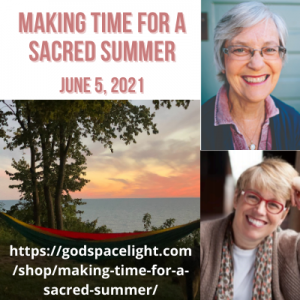
Here in Nashville, we are fast approaching summer. The thermometer hit 80 degrees today and the sun is out! Thankfully the humidity is low and there is a nice breeze, so it is an almost perfect day. Just a wee bit hot for me for this early! In the South, schools get out in May (verses June) so students are in the midst of exams and graduations are on the horizon…both online and in person depending upon the school. It feels like 2021 is flying by!
Maybe you are not quite ready to think of summer. Maybe you are still reeling from this past year and all the emotions it has brought to us. I was saying at thinplaceNASHVILLE on Tuesday night, that like the disciples, we are waiting. The disciples have gone back to Jerusalem to wait for the promised Holy Spirit. They know the Comforter is coming, they just don’t know exactly when. So they pray and wait together. We are all waiting for vaccinations and for those shots/jabs to be “live.” We are holding our breaths to see if our friends and neighbors will get vaccinated too. We are all waiting to see if we really can have a more normal summer this year.
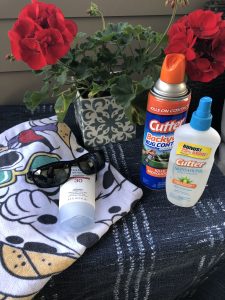
REMINDERS OF SUMMER
When you think of Summer, what comes to mind?
What are the sights, sounds, smells, tastes of summer? What are the memories of summer that make you smile? Spend time thanking God for these things!
What do you wish your summer could look like? What would a perfect summer be for you?
Where would you like your relationship with Jesus to be by the fall?
What if you and your community had a plan to intentionally grow closer to Jesus this summer?
What if you could open a gift each week… like the gift of rest, or the gift of play, or the gift of gratitude?
We created the Gift of a Sacred Summer just for you!
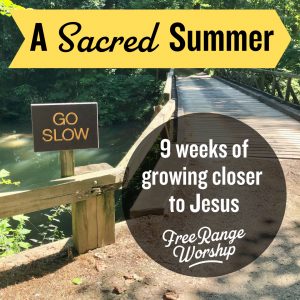
Open the gifts this Summer!
It’s a downloadable kit which features a 5 minute and 15 minute practice for each Gift of Summer, going deeper activities, and journaling questions that you can do on your own or with your family and friends. There are coloring sheets to use with each gift, liturgies, discussion questions, and social media graphics for churches and youth groups to use.
THE GIFTS are: Silence, Rest, Gratitude, Nature, Justice, Love, Play, Create and a bonus week on Grief to help us all process this past year.
You can do a few weeks or all of them! They aren’t in a certain order, so you can create what works for you and your family/church’s schedule. My good friends and FreerangeWorship teammates, Joanna Cummings and Edward Goode, both pastors, helped write the gifts and we are all excited to see how people “open” them this summer!
And we have another GIFT to open this summer… A RETREAT!
Christine Sine and I are offering to help you get your summer off to a great start with MAKING TIME FOR A SACRED SUMMER! We will consider how we can be intentional this summer, create a Sacred Summer Centerpiece, Sacred Space, Travel Kit, or a Prayer Collage and share our summer memories too! Sign up and join us JUNE 5th! You can create a picnic and invite a friend to join you!
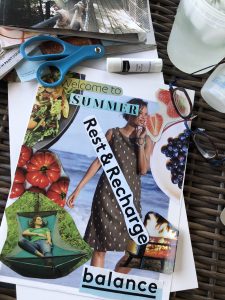
SUMMER COLLAGE
So consider how you want to draw closer to Jesus in the weeks ahead… What are the things that help you connect with God? What are the distractions that you want to avoid? What supplies do you need? A new journal perhaps? Or to make a comfy spot to pray in? Talk to Jesus about this. Talk to your family, small group, or housemates about what might be possible this summer. And check out THE GIFT OF A SACRED SUMMER and our RETREAT!
Make time for Jesus this summer!
by Laurie Klein
I will show them my wonders. —Micah 7:15
Without bees, life would languish. Essentially entwined with humanity’s welfare, honey bees deserve our support for their work in this world. Lately, they top my Wonder Index.
Imagine a car moving through a school zone. A honey bee can match 15-20 mph—for up to six miles. Whereas the human foot lightly depresses the accelerator, four wings rev 200 times per second, 11,400 times per minute.
Thus, the signature buzz.
Bees embody zeal. Like impassioned people, they go the distance. Next time you sweeten your tea, survey your spoon. Two tablespoons of honey would fuel a female’s flight around the earth. Yet her fleeting life’s work produces less than one teaspoon of honey. To produce a pound’s worth, the foraging sisterhood must fly 90,000 air miles, beelining among roughly two million flowers.
In America, the average honey lover consumes nearly 1½ pounds per year. Consider the mileage.
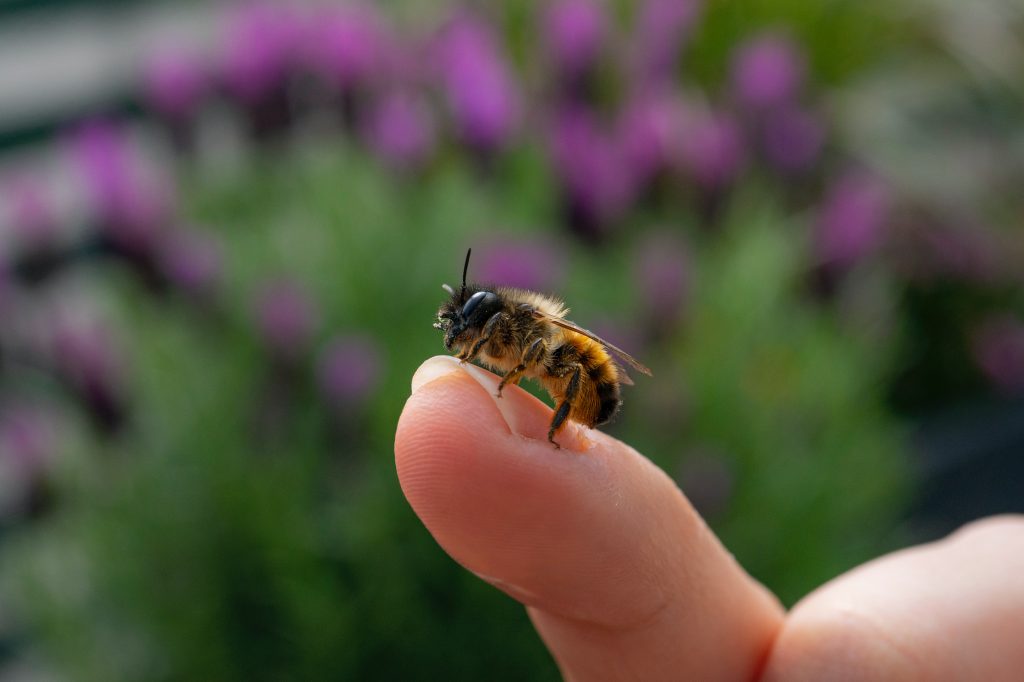
By God’s design, a bee is both a math whiz and a master builder, computing the shortest flit between blossoms as well as designing nature’s most efficient structure: honeycomb walls mitered at precise 120-degree angles. In a house of hexagons, the colony can yearly process 100 pounds of honey, providing nutrients and antioxidants to enhance the health of our skin and brain function. Honey also fosters healing. Not to mention delight.
Years ago, my mother excelled at enticing our busy toddler to alight. “Tea party time!” she’d call. The lure of honeyed raisin toast and gentle conversation before naptime captivated and nourished our daughter’s attention span.
Sweetness entices bees as well. Smear a jar with honey and foragers will detour to drop in. Were they to eyeball the person holding the jar, they’d take in the face, feature by feature, the same way we do—eyes, nose, whiskers, lips—piecing the parts into a complete image. Biologists call this “configural processing.” Experiments show bees can even learn to recognize specific faces. These studies may assist computer scientists working with facial recognition technology.
Bees share other similarities with us. Their vocational roles, like ours, pulse with possibility. Drones romance the queen. Scout bees hardwired for adventure stake out new blooms. Mid-lifers moonlight as undertakers, clearing away the fallen.
Can a bee go bad? Yes. Wily robber bees stalk compromised hives for easy honey. Thank heaven for soldier bees. Think of them as the muscle: mini-bouncers and bodyguards clocking in for security detail.
As followers of Christ, we also serve our communities. We attend to family concerns. Some build; others search out new resources and opportunities. Hopefully, we guard what God entrusts to us. Whatever our calling, we carry the precious nectar of the gospel.
But it’s costly, showing up for each other, day after day. Seeking the good of an entity greater than ourselves, we keep saying yes to our small, often unnoticed, utterly unglamorous assignments. And yet. Every yes contributes to the soundtrack humming beneath our days, a hymn of praise to the King who loves us—no matter how well we perform, no matter how much we love our work.
But roles change. Especially during a global pandemic.
Bees also adapt to the changing needs of the hive, sometimes, with startling results. After young nurse bees finish raising a hatch of larvae, they become upwardly mobile pollen runners. The new work depletes them. Recent experiments show that reassigning these wearied bees to larval care again rejuvenates their brain chemistry, bolstering a protein that reverses aging. It’s the same protein found in our brains, which can help fend off dementia. Further research may help us all thrive longer.
Versatile, industrious, focused—honey bees, in all their roles, enrich our lives in myriad ways.
But here’s the buzzkill, and it’s one of the pressing reasons to channel gratitude into practical action by getting involved on World Bee Day. Or any day. In recent years, pollinator-dependent crops have burgeoned. Colonies, however, are vanishing.
No one knows why.
Identified as “colony collapse disorder,” billions of honey bees across the world are abandoning their hives. In some regions, up to 90% are gone.
In response, the United Nations launched World Bee Day in 2018: “To raise awareness of the importance of pollinators, the threats they face and their contribution to sustainable development.”
Beekeeping takes many forms. To support their wonder-filled work, I’ve shouldered a few new roles: buying local organic produce, growing flowers bees love, and maintaining outdoor water bowls. And this heads my annual holiday wish list: Donate bees to immigrants and refugees.
What might you do?
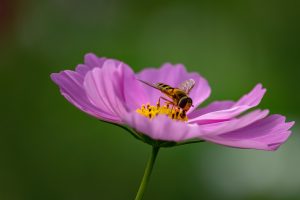
If you take photos or write nature poems, consider submitting work to Tiny Seed Journal. A portion of your submission fee supports Pollinator Partnership.
OTHER IDEAS:
- Plant nectar-rich lavender, rosemary, and bluebells
- Plant diverse native plants with different flowering times
- Buy raw honey from local farmers
- Choose organic produce whenever you can
- Purge your landscape of pesticides, fungicides, and herbicides
- Sponsor a hive
Sources:
- Feature Photo by Dustin Humes on Unsplash
- Photo with bee on finger by Anni Kat on Unsplash
- Closing Photo by abcd efgh on Unsplash
- Animated video on colony collapse: https://ed.ted.com/lessons/the-case-of-the-vanishing-honeybees-emma-bryce
- “Eat honey, my son, for it is good . . . Know also that wisdom is like honey for you: If you find it, there is a future hope for you, and your hope will not be cut off” (Prov. 24:13-14 NIV).
Join us for Making Time for a Sacred Summer virtual retreat with Christine Sine and Lilly Lewin!

poem and photo by Ana Lisa de Jong,
For love God has formed us.
For love, God
like a ring of engagement
placed upon our fingers,
has made us, glorious,
sacrosanct to him.
For love, God
indwelling,
draws a chair at the table,
and in the private cell of our hearts
makes himself space, a home.
For love God has filled us.
For love, God
like bread on the waters,
or wine at the brim,
in the cup of our body,
has made us as an offering, a gift to the world.
For love God has formed us,
shapes us,
makes us fully acceptable,
that on a fine day, we see ourselves
backlit by sky,
or placed high on a mantelpiece
in the honoured part of the home,
where all the guests who visit
whisper under their breath,
‘how beautiful,
how beautiful is that.’
For more poetry by Ana Lisa, please check out LivingTreePoetry.com.
Join us for Making Time for a Sacred Summer virtual retreat with Christine Sine and Lilly Lewin!

by J. Thomas,
On my way to learn the current theme, “Time for Love,” I find another: “Better Together.” Thank goodness I am looking! I already know what life event to share, and I know the Bible passage I want to tie in – but I do not know how God is going to weave all of these elements together to make a story that could only point to His miraculous work.
Here is my portrait of the miraculous catch of fish in Luke 5, updated for our contemporary audience.

About 1,500 pounds of donated clothing brought Westfield, NJ to Teaneck, NJ
Photograph by J. Thomas
This is my haul. I drive down to Westfield, New Jersey on a mission – to get “oodles and oodles” of clothes to put into boxes and bags. I will load up my Honda Accord and donate it all to Never Alone Again, a non-profit organization supporting victims of domestic violence and abuse. Every Saturday at 11am, its Resource Center provides food, clothing, diapers, and baby formula to anyone in the community.
The previous weekend is my first time volunteering there, and I feel like a guppy. There are tables of free clothes and volunteers checking people in to keep some order, but I cannot find my place. After about an hour flopping around, Ms. D. adopts me and asks me to help her in her duties of keeping the line moving while making sure people are not on top of each other. My tense muscles slightly loosen as I find a way to contribute. In the end, I am not there to work as much as to witness. To observe the weekly miracle of Theresa Johnston, taking her story of resilience over adversity to create a small organization that transforms her large sphere of influence one life at a time.
Before driving down, I try to impress upon Theresa the size of Westfield’s “Free Market” and the amount of surplus clothes that would be available.
“If you have someone with a truck, we should get some more people to drive down with me,” I explain.
I could tell that my attempt fails when she asks me if I could store the donations until the following weekend. No matter, I am not deterred and will show Theresa what I cannot convey in words.
Bible connection: In Luke 5, Jesus instructs Simon Peter to “set out for deeper waters.” I, too, obey Jesus’ voice and set out for deeper waters in Central Jersey letting down my net for a catch. The abundance of blessing is more than I could handle and more than I could bear – like my “joy joy joy joy joy joy!! =)” experience that I blog about and made a YouTube video about. The container of my heart is being stretched to the point of tearing like the worn fishing nets of Jesus’ first disciples. And just as Simon Peter calls over his partners to help him, I call my friends to load up their minivan with boxes and bags of donated clothes. I will make two trips back and forth. After unloading my packed car on Saturday, I make another two-hour drive the next day to gather the boxes stored in my friend’s garage. Triumphant in my mission, I make plans to meet with Theresa for coffee and exchange stories.
As much as I love a good story, I have always sought the deeper meaning and truth behind it all. Especially when it comes to the Bible. As a tenth grader, all I wanted for Christmas was a 17-volume commentary set on the New Testament by Scottish theologian William Barclay. More than 35 years later, I get to read Barclay’s insights, for the first time, on how the account of the miraculous catch of fish in Luke 5 provides a “list of conditions for a miracle.”
If you would indulge my artistic license, here is my recipe list for the best environment for a miracle.
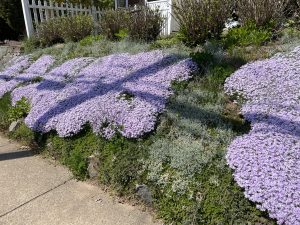
Creeping phlox greet me as I volunteer at Never Alone Again (NAAG)
Photo by J. Thomas
Better Together study from William Barclay:
- An “eye that sees” or A WITNESS. Barclay matter-of-factly states that there is no reason to think that Jesus created a huge school of fish. In the Sea of Galilee, there were teems of fish naturally covering square acres at a time. He thinks that Jesus likely had a keen eye and saw such a school which might make it appear like a miracle. My friends invited me to go camping with them last Labor Day weekend, and on our return, they were well aware of the Free Market as all the local Westfield residents were. I scored an abundance and toys and children’s books for my four-year-old daughter. I partook in the generosity Westfield residents because my friends were supporting me through a life crisis. As a result, I was there to witness this “free market” event and knew where the surplus donations could be found. WE are all the witnesses who see.
- A “spirit that will make an effort” or A REASON. At the end of Westfield’s Free Market in 2020, I watched several trucks carry the unclaimed items away. Back then, I had no connection to Theresa Johnston or her organization Never Alone Again. I did not know that Never Alone Again’s Domestic Violence Resource Center operates year-round and provides a few dozen residents with clothes, diapers, formula, and food every week to the community. After collecting donations from local residents every day, Theresa and the army of volunteers she employs sort, process, and organize the donations for efficient and effective distribution to those who need it most in Teaneck, New Jersey and the surrounding towns.Anyone who needs, with no questions asked, can stop by and get connected with resources that are most vital to them. Once a week since COVID-19 quarantine started, the community lines up every Saturday morning to gather a several bags worth of donated clothes for themselves and for others they know need clothes too. The men and women who swarm the tables of donation, though unruly at times (hence the need of Ms. D’s gentle rebuke), are actually on a mission to give clothes to the ones they love as well as get the items they need. The reason for all of the madness is simple: love. WE all embody the reason which is love.
- An “attempt at what seems hopeless” or AN IMPOSSIBLE MISSION. All the circumstances were against Simon Peter because the logical time for fishing was past. Yet he responds, “circumstances be what they may, if you say so, we will try again.” If we wait for the perfect circumstances or the perfect timing, we will never begin at all. Barclay prods us, “If we want a miracle, we must take Jesus at his word when he bids us to attempt the impossible.” It seems impossible to topple systemic social and economic inequality, but we need people like you and me who will raise their hand and volunteer for the impossible mission: an attempt. Jesus calls us all to take his left hand while his mighty right hand performs the miracle. WE can all make an attempt at the impossible mission.
- With these ingredients, all we need now is a stirring of the Holy Spirit, which is the love that passes between the Father and the Son and binds every zoë together, whether animal, vegetable, or mineral. The Holy Spirit is all of it. The reason for the miracle, the secret ingredient, and the mixing spoon. The Holy Spirit is the Person who chooses the time for this Love Feast.
“Better Together” summarizes the thread that runs through each of these ingredients or environmental factors if you will.
First, this miracle would not have happened if it were not for my friends who lived 35 miles from me that I see almost every week. There is no way I could have known about Westfield’s Free Market. But because we have formed a tight-knit family of friends, I witnessed this “sighting” of a large trove of surplus clothes.
Second, I need a connection to Theresa Johnston and Never Alone Again. What good is the knowledge of this huge haul of clothes if there is no organization to help distribute it? I am so glad to have hopped, skipped, and leaped my way from church to food pantry volunteer, so that I was able to meet this phenomenal woman. You can see more about the work she does at this YouTube interview. Theresa Johnston gave me the “spirit” to make an effort because of all she already does.

Photograph by J. Thomas
Never Alone Again’s Anchor Verse: I will never leave you nor forsake you. Hebrews 13:5
And, finally, I need a connection with something greater than myself – the impossible mission. You can find the impossible mission anywhere you see someone trying to do something by themselves. Whether it be trying to escape an abusive relationship or become a successful entrepreneur. More than 20 years of struggling with my addiction, I have learned that doing the same thing over and over again and expecting different results is the definition of insanity. For me, trying to do it by myself was my insanity.
For my first-ever post for godspacelight.com, I wrote about my how struggling through my addiction Improved My Conscious Contact with God. I did not get sober right away, but learned to ask for help, which in retrospect, was by far the greater miracle. In the crucible of my hardest times, I learned the hard way that I cannot do it alone. Whether it be beating an addiction, surviving a personal loss, or strengthening a marriage, humans were not meant to operate in isolation. It a crisis like this where all of the cracks become exposed of “doing it alone” and things fall apart. It is when the nets tear and the boat of our lives begin to sink. Like Simon Peter, we are gripped with our utter inadequacy. Go away from me Lord; I am a sinful man!
We don’t have to build again with the help of others, but we get to. This is what I see in Never Alone Again’s anchor Bible verse: “I will never leave you nor forsake you.” (Hebrews 13:5). It is my honor to introduce you to a remarkable woman of faith who has learned so many lessons the hard way and has committed her life to the joyous miracle of helping others find the truth that God has a new name prepared for them. Please support her ministry at neveraloneagain.org.
To the Godspace Light community, I plan to post at least one more follow up on Theresa a few months from now on the Godspace Light blog. I hope you can watch with me and keep looking for what the Holy Spirit is doing through our extraordinarily special space.
NOTE: J. Thomas will soon publish his first book Dry and Barren Land: persevering through seasons of spiritual drought. For now, please check out his blog at dryandbarren.com.
Want to create a travel kit or sacred centerpiece for this Summer/Winter? Join us for Making Time for a Sacred Summer virtual retreat with Christine Sine and Lilly Lewin!

by Donna Chacko,
Lately I’ve been thinking a lot about listening and silence. I recently wrote a blog post about listening and soon thereafter attended a weekend silent retreat. I’ve concluded that listening and silence are complementary—they thrive together. When we prioritize silence we can intentionally listen to God, ourselves, and others and, in this way, create a sacred space where love blooms. When we embrace silence and listening, we love.
Dietrich Bonhoeffer said: “The first service one owes to others in the fellowship consists in listening to them. Just as love of God begins in listening to His Word, so the beginning of love for the brethren is learning to listen to them. It is God’s love for us that He not only gives us His Word but lends us His ear. So it is His work that we do for our brother when we learn to listen to him.”
Saint Teresa of Calcutta adds: “God speaks in the silence of the heart. Listening is the beginning of prayer.”
The title of the Diana Ross and the Supremes’ famous song, Stop! In the Name of Love, is enough to make me immediately hear the song in my mind and start singing the words—maybe the same happens with you. Here’s how this song title can help you listen in silence and love more deeply.
None of us can become better listeners unless we take some concrete steps to do so. My friend, Brian Plachta, author and spiritual director, created a useful tool, called STOP, based on this song title. In his recent article, How to Be a Contemplative in Action, he describes our contemplative and active sides and how, when our days are balanced between the two, “we find a natural rhythm that’s life giving… We become a contemplative in action.” For many of us who are not balanced and find it difficult to embrace silence and listen during our busy days, he offers STOP as a spiritual practice to help us stay in balance. Brian uses the gospel story of Martha and Mary from Luke 10: 38-42, the contemplative sister and the busy sister, to make his point. When he gets too Martha-like, he tries to STOP.
“STOP: A Spiritual Practice
S: Stop what you’re doing when the day’s busyness tries to make you crazy. Be present to your body.
T: Take three deep breaths. Calm yourself with the gentle flow of steady air filling your lungs, slowing your heartbeat, and releasing stress.
O: Observe. Notice with curiosity (not judgment) what you’re experiencing. Name the emotions you feel. Let them flow in and through you.
P: Perceive. Ask yourself what you need in this moment. What would be life-giving for you now? A nap? A few more moments of silence? A reminder you are safe and capable, that what needs to get done will get done, and the rest will be there for tomorrow?”
Brian’s STOP practice involves mindfulness and listening to your body and your feelings. But, what do you do if you really want to STOP, but just cannot seem to remember this good intention until after you have snapped at your spouse or worked so long you are frazzled and have a headache? There are preparatory steps you can take that will condition your body, mind, and spirit so you will be more aware and mindful of when you need to STOP—in other words, it will become easier to STOP.
In my forthcoming book, Pilgrimage: A Doctor’s Healing Journey, I describe what happened with me as I slowly became more self-aware, analogizing my changing mind to a sponge becoming softer.
In Chapter 11, I write: “I had to be open to allow the process to happen. It was in that learning to ‘be’ rather than to ‘do’ that I started to be aware of changes in my perceptions. I’m convinced that my Centering Prayer* meditative prayer practice, which I embraced as precious time resting with my Lord, actually had already altered my mind, quieting it, and making it more open to therapy. It’s like my emotional mind was evolving from a hard, scratchy, dried-up old sponge to a soft, expanding sponge that was increasingly able to absorb water. The process started slowly. Initially the dry and dull sponge repelled the water, but it gradually became more pleasant to touch and was flexible—less likely to crack when pressure was applied. My mind was becoming more permeable to challenging memories, perceptions, and ideas. As I became more mindful, I became more aware of my suffering or anxiety in a way that helped me to meaningfully respond instead of automatically reacting to my distress.”
So, how can you become more sponge-like so that it will be easier for you to STOP? Find some time for silence. Start with getting up 10 minutes earlier every day for silent prayer. It’s a small step, but will lead to other steps and more awareness of each precious moment.Slowly, you will absorb the practice until you are able to become more mindful. That’s it— STOP as often as you can, make time for silent prayer, listen, and love.
Thanks for reading and God bless you. If you are interested in learning more about my upcoming book, go to serenityandhealth.com/pilgrimage.
Donna
*To learn more about Centering Prayer check out contemplativeoutreach.org or my recent conversation with Carl McColman, contemplative author.
Image by C. Koch from Pixabay
Want to create a travel kit or sacred centerpiece for this Summer/Winter? Join us for Making Time for a Sacred Summer virtual retreat with Christine Sine and Lilly Lewin!

by Christine Sine
My Easter garden has undergone its final transformation. Last week I splurged on a pack of 100 Different Country flags and over the weekend added as many flags as I could to my garden to form a Pentecost prayer garden. What resonates most with me about Pentecost is that the crowds that gathered in Jerusalem that day didn’t all speak the same language, they understood each other in their own languages across the barriers of culture and race. Pentecost speaks to me of global unity and understanding. As I planted my flags, I realized how few of them I could identify. Even when I prayed for India I had to do a Google search to identify its flag before I could make sure it was prominently displayed. It made me wonder if one important step in reaching for cultural understanding is to learn to identify the flags of our neighbours all around the world. So I went hunting and came up with some fascinating facts thanks to this helpful article. He explains:
Did you know that Denmark holds the Guinness world record for the oldest continuously used national flag? Mozambique is the only country in the world whose flag incorporates a modern weapon – an AK 47 – representing vigilance and defense and South Africa’s flag contains the greatest variety of colours. The UK flag consists of the crosses of St George, St Patrick and St Andrew. Interestingly St George who is the patron saint of England was probably born in Cappadocia to a Syrian mother. He is thought to have died in Lyydia in the Roman province of Palestine.
Flags speak of our identity both personal and national and our feelings towards them tell us a lot about our feelings towards our own country and those of our global neighbours. I realized this as I held my Australian and American flags in my hand this morning and placed them side by side in my garden. I have much stronger feelings towards the Australian flag and towards Australia, in spite of the fact that I have not lived there for almost 50 years. It is past time for me to seek for great understanding of the culture into which I have been transplanted and grown over the last 30 years.
One of the disciplines I have decided to institute as part of my Pentecost celebration this year is learning to identify as many national flags as possible and in the process I plan to learn a little about the countries they represent in the desire to do what little I can for global understanding, peace and unity.
Evolution of a Garden
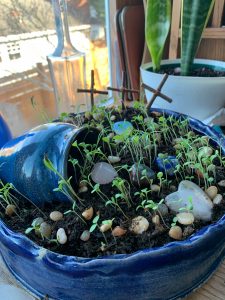
Contemplative garden – Time for Love
You may remember that this garden began as my Time to Love garden, in which I planted seeds and arranged several heart shaped stones as a symbol of both hope and of the love of God most evident in Easter season. The garden evolved when I noticed that the plants were crowding each other out and so I transplanted most of them into small pots to nurture them until they were big enough to plant out in the garden. This weekend I planted most of them into their permanent places in the garden, hopefully ready to grow and produce blossom and fruit amongst the other already established plants. On that occasion, I commented:
For the seedlings that have sprouted to produce their full harvest, they must be uprooted, transplanted and eventually replanted all around the garden. Maybe they will even take the love stones with them or need some new and bigger “love stones” around them.
As an Amazon Associate, I receive a small amount for purchases made through appropriate links.
Thank you for supporting Godspace in this way.
When referencing or quoting Godspace Light, please be sure to include the Author (Christine Sine unless otherwise noted), the Title of the article or resource, the Source link where appropriate, and ©Godspacelight.com. Thank you!

